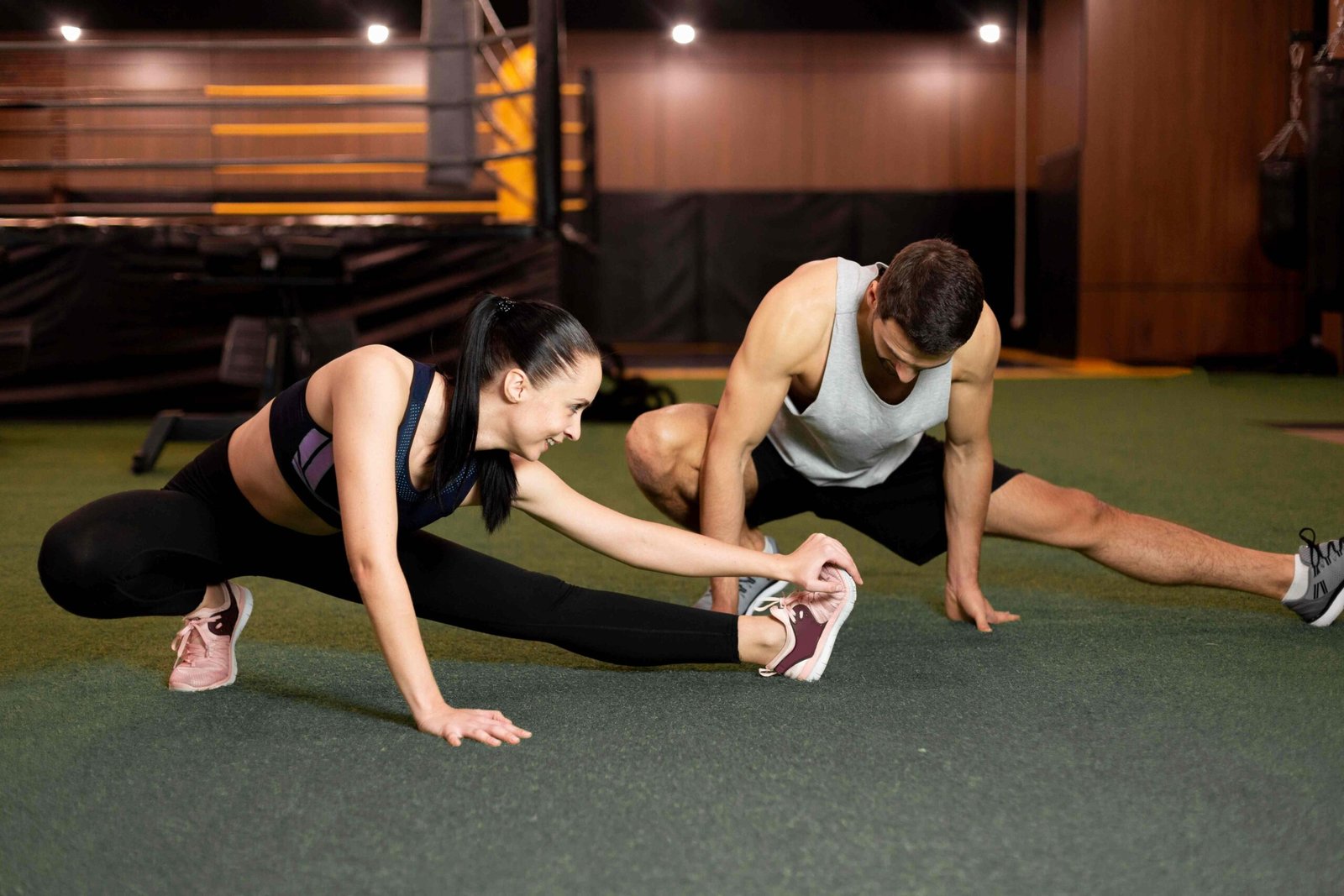When it comes to designing or choosing the right sports flooring, one of the most critical considerations is slip resistance and traction . Athletes, whether they are basketball players making sharp cuts, badminton players lunging toward a shuttle, or volleyball players diving to save a ball, rely heavily on the grip and response of the floor beneath their feet. The core concern for coaches, facility managers, and players is simple yet vital:
“Does the surface offer enough grip to prevent slipping during quick cuts and lunges, while still allowing for smooth, controlled sliding when needed?”
The balance between grip and glide is what separates a safe, high-performance sports floor from one that increases the risk of injuries and compromises gameplay. In this blog, we’ll dive deep into the science, testing standards, athlete perspectives, and real-world examples of slip resistance and traction in sports flooring.
Why Slip Resistance & Traction Matter
1. Athlete Safety
Slips are among the leading causes of sports-related injuries. When a floor lacks proper grip, athletes can lose control during rapid movements, leading to twisted ankles, torn ligaments, or even career-threatening injuries. On the other hand, too much grip can also be dangerous, as it prevents natural sliding motions, resulting in higher stress on joints.
2. Performance Optimization
A player’s ability to execute movements like crossovers, pivots, lunges, and dives depends on the floor’s traction. Flooring that delivers balanced traction allows players to move fluidly without hesitation, boosting confidence and enhancing performance.
3. Sport-Specific Demands
Different sports require different levels of traction:
- Basketball: High grip for explosive direction changes.
- Badminton: Strong traction but with controlled sliding for lunges.
- Volleyball: Moderate grip to support dives and recoveries.
- Indoor Soccer/Futsal: Consistent traction to prevent slips during sprints.
Understanding these unique demands helps in choosing the right flooring system for multi-purpose or sport-specific facilities.
The Science of Slip Resistance
Slip resistance is often measured using the Coefficient of Friction (CoF) —a numerical value that represents the grip between the athlete’s shoe sole and the floor surface.
- Static CoF: The resistance when an athlete is stationary.
- Dynamic CoF: The resistance when an athlete is moving (sliding, pivoting, or running).
Ideal Range
- Too low CoF → Slippery surface, higher risk of falls.
- Too high CoF → Over-gripping, leading to joint stress or inability to slide when needed.
The goal is to maintain an optimal range where athletes have confidence in their footing while still being able to execute controlled slides.
Standards and Testing
To ensure that sports flooring provides adequate traction, several international bodies have established testing methods:
1. FIBA (Basketball Standards)
The International Basketball Federation (FIBA) requires basketball flooring to maintain consistent friction levels to support rapid changes of direction without unexpected slips.
2. EN 14904 Standard
This European standard sets strict parameters for indoor sports flooring, including slip resistance, shock absorption, and ball bounce. The slip resistance test measures the friction between standard shoe soles and the floor under controlled conditions.
3. ASTM Standards
The American Society for Testing and Materials has methods like ASTM D2047, which evaluates slip resistance using a tribometer.
4. BWF (Badminton World Federation)
In badminton, traction is essential for lunging and recovery. The BWF ensures flooring used in professional tournaments meets specific CoF values for safety and performance.
By complying with these standards, sports flooring manufacturers guarantee surfaces that deliver predictable, safe, and high-performance grip.
Materials and Finishes That Influence Traction
1. Wood Flooring
Hardwood courts (eg, maple) are popular in basketball and volleyball. Their natural grain and finish provide excellent traction when properly maintained. However, dust and sweat can reduce grip, requiring frequent cleaning.
2. Synthetic Vinyl Flooring
Vinyl sports floors are designed with textured surfaces that enhance slip resistance. They’re especially popular in multi-purpose gyms due to their balance of grip and ease of maintenance.
3. Polyurethane Flooring
Seamless polyurethane floors are durable and customizable. Surface roughness can be adjusted to deliver the desired level of traction.
4. Rubber Flooring
Often used in fitness and training facilities, rubber provides strong traction and slip resistance, especially in areas prone to sweat and moisture.
5. Hybrid and Modular Systems
Some modern sports floors use modular tiles with engineered surfaces designed to mimic hardwood or vinyl traction levels while being easier to install and maintain.
Factors That Affect Slip Resistance in Real-World Conditions
Even the best sports floor can lose traction due to external factors. These include:
1. Moisture and Sweat
During intense matches, sweat drips on the floor can cause localized slippery spots. This is why staff in professional games frequently wipe the court.
2. Dust and Dirt
Dust reduces surface friction, making even high-quality floors slippery. Regular sweeping and vacuuming are critical.
3. Footwear
The type and condition of shoes significantly impact traction. Old or worn-out soles reduce grip, while sport-specific shoes maximize the benefits of the flooring.
4. Temperature and Humidity
Environmental conditions can alter floor properties. For instance, high humidity may cause surfaces to feel sticky, while dry environments can reduce grip.
5. Floor Maintenance
Using inappropriate cleaning products can create residue, affecting slip resistance. Floors should always be cleaned with manufacturer-recommended solutions.
Athlete Perspectives
Athletes are often the best judges of traction because they experience it in real time during play. Here are some common athlete insights:
- Basketball players: “I need a floor that lets me stop instantly but also slide just enough when diving for the ball.”
- Badminton players: “If the grip is inconsistent, it throws off my rhythm, and I can’t fully commit to lunges.”
- Volleyball players: “Too much grip means I can’t dive smoothly—it feels like my joints take the hit.”
The consensus is clear: consistency matters as much as the level of grip itself. An inconsistent surface where some areas are slippery and others too sticky increases injury risks.
Real-World Case Studies
Case 1: Basketball Court Renovation
A high school in Texas upgraded from old vinyl flooring to a FIBA-certified maple hardwood system. Players immediately reported better traction, fewer slips, and improved confidence during games.
Case 2: Multi-Purpose Gym
A community center in Europe installed EN 14904-compliant vinyl flooring. The textured surface delivered reliable grip for basketball, volleyball, and futsal, making it a versatile solution.
Case 3: Badminton Facility
A badminton academy in Asia switched to BWF-approved synthetic flooring with optimized traction. Athletes experienced fewer falls during lunges and quicker recovery after dives.
These examples highlight the importance of selecting the right flooring for the intended sports while considering long-term safety and performance.
Balancing Grip and Glide
One of the biggest challenges in sports flooring design is achieving the perfect balance between grip (to prevent slips) and glide (to allow natural sliding movements).
- Too much grip → Strain on knees and ankles.
- Too little grip → Dangerous slips and loss of control.
Modern flooring systems are engineered with advanced coatings and surface textures that fine-tune this balance. For example, some manufacturers use micro-textures that provide traction at a microscopic level while still enabling smooth sliding.
Maintenance Best Practices for Slip Resistance
- Daily Cleaning: Dust mop or vacuum floors to remove dirt.
- Moisture Management: Use absorbent mats and have staff ready to clean sweat spots during games.
- Correct Cleaning Agents: Avoid waxes or soaps that leave slippery residues.
- Regular Testing: Use tribometers or other testing devices to check slip resistance periodically.
- Athlete Education: Encourage athletes to wear proper shoes and report slippery spots.
Future Innovations in Slip Resistance
Sports flooring is evolving with new technologies:
- Smart Floors: Sensors embedded in floors can monitor traction levels in real time, alerting staff to slippery zones.
- Eco-Friendly Coatings: Sustainable finishes that maintain grip without harmful chemicals.
- Customizable Surfaces: Adjustable traction systems for multi-sport facilities where one floor needs to serve different grip requirements.
These innovations will further enhance athlete safety and performance in the years to come.
Conclusion
Slip resistance and traction are not just technical specifications—they are the backbone of athlete safety, performance, and confidence. A well-designed sports floor offers the perfect grip-to-glide ratio , enabling athletes to play at their best while minimizing the risk of injury.
When facility managers, coaches, and architects ask: “Does the surface offer enough grip to prevent slipping during quick cuts and lunges, while still allowing for smooth, controlled sliding when needed?”
The answer lies in choosing certified, sport-specific, and well-maintained flooring systems . By understanding the science, adhering to international standards, and factoring in real-world conditions, stakeholders can ensure that every step athletes take is both safe and powerful.
In the end, the right traction doesn’t just protect joints—it empowers athletes to push their limits, perform with confidence, and enjoy the game to the fullest.



